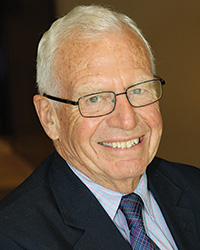
Kirk & Company
What’s built is what’s financed, mostly. Accordingly, good ideas in commercial real estate need buy-in from the capital markets, even where equity capital is substantial in the capital stack. Demand continues to be supported by job gains (net 225,000 newly hired in January 2020), moderate and broadly distributed. The counselors convene in Boston May 3-5, to take a hard look at the dynamics of the current market. And to discuss the watch-list or Top Ten concerns looking forward. And how to proceed for extra the innings provided by the extraordinary expansion expected to continue.
Commercial real estate has sustained capital availability. Increasingly, cash flow and demonstrated earnings capacity are the focus. Underwriting the deal, the project, the use, the location and the local economy are all cranking up, focused, and demanding, guided by market and project diligence. Now the risks are getting specific underwriting focus. Commercial real estate has historically been impacted by economic contractions. Now innovation and environmental macro risks are micro and sources of property risk, real risks that can be mitigated and underwritten. Most mitigation strategies are sensible, already adapted. All are now cautiously underwritten by capital sources. Cash flow and earnings have been historically a reliable indicator of property performance. Now, sustainability is the major focus of underwriting for capital, including stricter requirements for capital improvements and reserves.
The Boston Counselors meeting has highlighted climate change (resilience, green development, ), demographic shifts (age cohort redistribution and behavioral tendencies) and innovation as three critical impacts and concerns for commercial real estate. Climate change has an ever-expanding direct impact on our built environment, both current and in any strategic assert planning and underwriting. Technical panels on this issue have been longstanding staple of CRE get togethers. CBRE global chief economist Richard Barkham, Ph.D., CRE will provide platform for trends and outlook, for understanding underlying demographics. Dr. Andrea Chegut from MIT Center for Real Estate will lead a panel on innovation and real estate. Counselors are anxious about any program that is too macro or too micro. Climate change, demography and innovation have never been a snooze. Now they are really among the brightly blinking on the dashboard. Boston has lots of good activity and trends for examining exuberance and underbelly of market conditions and outlook. Anecdotal cases will be an integral theme of the CRE meeting.
Recent releases of Beige Book (January 15, 2020) by the Federal Reserve Bank and Benchmark (February 4, 2020) for the Commonwealth of Massachusetts have supported current economic fundamentals and provided good tips for the underwriting and the forecast for commercial real estate. Beige Book reported aggregations of anecdotal data from contacts outside the Federal Reserve System, and the January report includes summary descriptors of economic conditions since November of modest to moderate gains, and some moderations. Benchmark reported upward revisions in gross state product since 2017, upticks in the Massachusetts Business Confidence Index. Benchmark has reported labor constraints on growth and uncertainty from trade talks as primary headwinds. Apparently somewhat subsided. Mobility and its impact on labor availability and housing affordability are the rest of the story.
P.S. Exploding demand for cyber security and cyber connectivity and infrastructure. Sidebars. Work in process or progress. State and local initiatives abound. Both need increased Federal support.
David Kirk, CRE, MAI, FRICS, is principal and founder of Kirk & Company, Real Estate Counselors, Boston.








